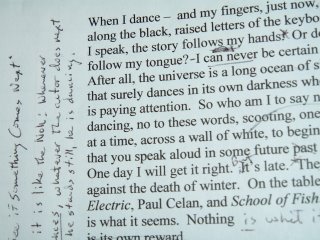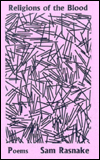walking on...
from my anthology of must read (a)merican poems
Linda Gregg
The Lamb
It was a picture I had after the war.
A bombed English church. I was too young
to know the word English or war,
but I knew the picture.
The ruined city still seemed noble.
The cathedral with its roof blown off
was not less godly. The church was the same
plus rain and sky. Birds flew in and out
of the holes God’s fist made in the walls.
All our desire for love or children
is treated like rags by the enemy.
I knew so much and sang anyway.
Like a bird who will sing until
it is brought down. When they take
away the trees, the child picks up a stick
and says, this is a tree, this the house
and the family. As we might. Through a door
of what had been a house, into the field
of rubble, walks a single lamb, tilting
its head, curious, unafraid, hungry.
*
Linda Gregg is a poet of transformation, and that draws me to her work. Many of her poems focus on the dark side of faith, yet her approach allows an honest view of the wholeness of life. Her poetry almost always expresses a deep sense of or need for revelation.
In “The Lamb” the speaker is attentive to the details of a photograph: a war-ruined city that seems noble; cathedral with a missing roof; rain and sky; birds in flight. As the speaker invents, or at least interprets, the world of the photograph, the reader, likewise, invents a world inside the poem: the singing bird, the tree, family, house, and lamb. That’s a wonderful dualism.
Civilization’s cruel nature is realized in rejection: “our desire for love or children / is treated like rags” – by an unnamed enemy. Gregg then writes, “I knew so much and sang anyway.” But the bird is brought down, and the song ends; the sky finishes the missing roof, and the child pretends the stick is a tree, a house, a family. The poem’s balanced elements lead to one crucial image: a lamb walking into a field of rubble. “Curious, unafraid, hungry” – the lamb walks through a door “of what had been a house.” Had been, an interesting verb choice, must yield to something more. A house becomes a path.
Although the cathedral’s roof is missing, the sky and rain are present, lending a sense of completion to the structure’s limited purpose and spiritual imperfections. Even when “God’s fist” is evident – and here read a certain strain on faith – the lamb, symbolic of fragility and a Blakean innocence, walks on. Its head is tilted, illustrating that the hunger is not just for food – spiritual or literal – but is a hunger for its own lamb-ness. This is James Wright territory. To find awakening, one must move deeper into the unexplored self. In this regard, the poem has a kinship to the lamb in Phillip Larkin’s “First Sight”.
What I like most about this piece is the way the poet remedies the bombed out scene, rain, lost trees, fisted holes – one lamb walking on. The part in me that identifies with that walk is the part that allows me to be transformed.









3 comments:
hi,
i love this poem, sam
This could have so easily been a "Jesus poem", but it transcends to become more about the human spirit and resilience. Love it.
Thanks GF and Collin. I appreciate the read.
Post a Comment